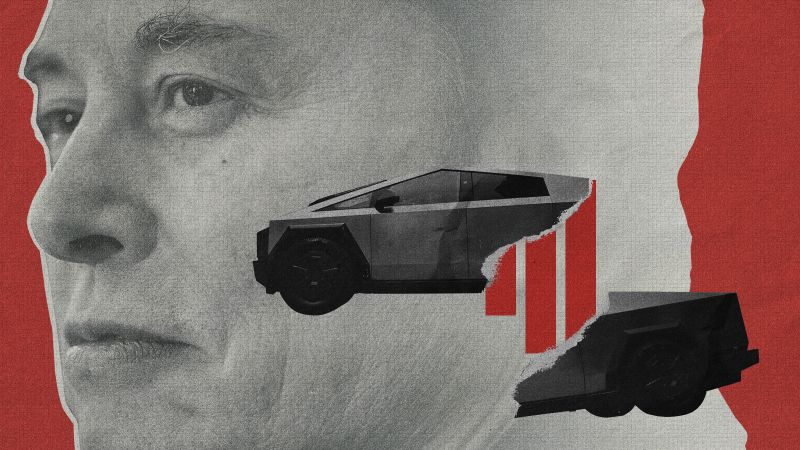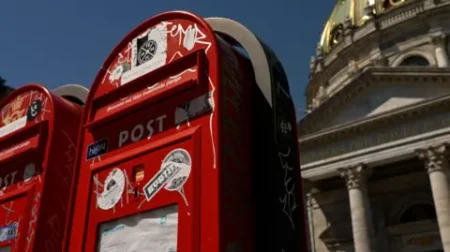Elon Musk has often been viewed as a visionary leader capable of driving transformative change through his ventures like Tesla, Inc. However, recent developments suggest that his grand promises may no longer suffice for many Tesla investors. This shift in sentiment comes in light of disappointing financial results that have raised concerns about the automaker’s future direction, particularly following its latest earnings report, which was released after market hours on a Wednesday.
On Thursday, Tesla’s stock (TSLA) experienced a significant decline, dropping by 9%. This downturn came after the company reported major declines in both earnings and revenue, marking a notable drop in sales—the largest in its history. These financial losses are compounded by several troubling factors affecting Tesla’s business model. Among them is the expiration of the $7,500 tax credit for U.S. electric vehicle (EV) buyers, which took effect in October. Furthermore, Tesla has seen a diminishing market for regulatory credit sales, a scheme that has generated approximately $11 billion in revenue since 2019, but is now losing its efficacy.
During the earnings call, CEO Elon Musk touched upon the challenges but was more inclined to discuss the company’s ambitious plans for the future. This included visions for a long-awaited robotaxi service and the development of a humanoid robot known as Optimus. However, this focus on futuristic goals disappointed some investors and analysts who were more concerned with the immediate challenges faced by the corporation, especially in light of its recent financial performance.
Garrett Nelson, an analyst from CFRA Research, noted that while Tesla’s shareholders had been forgiving during previous quarters, the current landscape appears to be changing. Investors are beginning to grapple with the reality of Tesla’s situation as it faces numerous obstacles. “Some of his brilliance has been his ability to keep investors focused on the long term,” Nelson commented, referring to Musk’s historical ability to inspire faith in Tesla’s future endeavors, “but now, headwinds are difficult to ignore.” Nelson modified his rating for Tesla’s stock to neutral back in April, indicating a cautious stance toward the company’s prospects.
Other analysts echoed this sentiment, showcasing a growing impatience among investors. Dan Ives, a tech analyst at Wedbush Securities, expressed that although he still supports Musk’s vision of autonomous vehicles and artificial intelligence, there is a palpable loss of patience within the marketplace. Investors have become wary of the time it is taking for Musk’s ambitious projects to transition from concept to reality.
One of Musk’s hallmark promises has been the robotaxi service, which he initially claimed would be operational within a year as early as 2019. The rollout of Tesla’s robotaxis finally took place in June this year but has been limited to specific areas, such as Austin, Texas, and relies on having a company employee present in the vehicle. Despite this initial step, Musk made optimistic claims about expanding the service across the country by the end of the year—an assertion that would require swift regulatory approval from multiple states, including stringent areas like New York, which does not permit autonomous vehicles.
Despite the long-range prospects many analysts believe Tesla retains, particularly in terms of the robotaxi venture, the sentiment among some is that the technology may not be ready for full deployment until as late as 2028. This skepticism underscores a pattern in recent months; Musk has previously made high-profile promises that have yet to materialize fully, such as anticipated sales figures for the Cybertruck.
The Cybertruck, Tesla’s sole new vehicle release in the past six years, was projected by Musk to hit annual sales of 250,000 units by 2023. However, actual sales figures fell short of expectations, totaling less than 80,000 across the Cybertruck and other premium models, marking a substantial 52% drop in sales in the past quarter. Additionally, after experiencing its first annual sales reduction in its real history in 2024, Tesla amended its initial sales forecasts to reflect more conservative expectations, further contributing to investor uncertainty.
In conclusion, as Tesla grapples with immediate financial headwinds while maintaining an ambitious long-term vision, the company’s leadership may need to shift focus from future aspirations to current realities if it hopes to regain investor faith. Ben Kallo, an analyst from Baird, succinctly summarized this sentiment, expressing cautiousness regarding Tesla’s ability to meet its goals and suggesting that prolonged struggles in the automobile sector could bring increased scrutiny on the company’s immediate performance.












